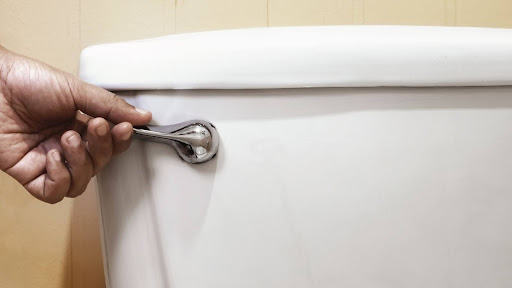
Running water, weak flushes, and visible leaks—urgent attention is required to prevent significant water damage to your home when your toilet breaks. However, the many components of the toilet can make it difficult to diagnose the root of the problem. By outlining key toilet flush parts and learning how they most commonly malfunction, you can quickly direct your plumber to the problem when fast toilet flush repair is necessary.
Northern Virginia homeowners experiencing unsatisfactory performance from their plumbing can rely on Willway Services for comprehensive solutions. Offering plumbing maintenance, repair, and installation services, our team has the tools and expertise to deliver outstanding results. Furthermore, we guarantee client satisfaction by exclusively employing experienced plumbing professionals. If you’re facing a home plumbing dilemma, call (571) 365-0304 today!
Below, we list critical toilet parts and their most common problems:
1. Toilet Flapper
Located at the bottom of the toilet tank, the flapper seal is a rubber or plastic disc that prevents water from flowing into the bowl until the tank is full. When you press the toilet handle, a chain lifts the flapper, allowing water to rush into the bowl and create the flushing force. When working properly, the flapper falls back down and completely covers the opening once the flush is complete.
Common malfunctions include a worn-out, misshapen, or otherwise misaligned flapper that doesn’t form a perfect seal, causing a constantly running toilet. If you notice a leak and/or running toilet, contact your plumber immediately to replace the seal.
2. Toilet Flush Valve
The flush valve, located beneath the flapper in the toilet tank, is the gatekeeper of the tank’s water. It remains shut, thanks to the flapper’s seal. When you press the handle, the chain lifts the flapper, and the flush valve springs into action. It opens, forcing a surge of tank water into the bowl to create a powerful flush. Similar to weak flappers, malfunctions with the flush valve can show themselves in two main ways: weak flushes that don’t have enough force or stuck-open valves that allow water to flow continuously into the bowl.
3. Wax Ring
Though it may appear unassuming, the wax ring is an essential toilet component for preventing leaks and nasty sewer gasses. Located at the base of the toilet, where it meets the drainpipe, the wax ring forms a watertight seal between the drain opening and the toilet itself.
Over time, the wax ring can dry out, crack, or become misaligned. This can lead to leaks manifesting as pooling around the base, a telltale sign that your bathroom floor might be harboring unwanted moisture. Additionally, a compromised wax ring can allow sewer gasses, with their unpleasant odor, to seep into your bathroom.
Never rely on DIY plumbing solutions when you spot a broken wax ring. Replacing a wax ring requires removing the toilet, which can be tricky, risking drain damage or leaks if not done correctly.
4. Toilet Flush Handle

Arguably the easiest to identify, the toilet handle is the lever you push to initiate a flush. When you press the handle, it translates that force to the lift chain, which in turn pulls up on the flush valve lever. This action opens the flush valve, allowing tank water to rush into the bowl.
Malfunctions with the handle can be as simple as a loose connection at the mounting nut, causing the handle to jiggle or feel disconnected. In other cases, the handle can crack or break, rendering the flush mechanism inoperable. A broken handle might also affect the flapper’s ability to seal correctly, again leading to a running toilet.
5. Fill Valve
The fill valve refills the tank with water after each flush— a pressure-sensitive switch that controls water flow from the supply line. As the water level drops after a flush, the fill valve activates, allowing water to flow into the tank. Once the water reaches a predetermined level, the fill valve is signaled to shut off to prevent overflow.
Issues with the fill valve can be messy affairs. A common problem is a worn-out fill valve that doesn’t shut off completely, causing an overflowing toilet or constant flush. Alternatively, the valve might become clogged with mineral deposits, hindering water flow and leading to incomplete fills and weak flushes.
Turn to Willway Services for Swift Toilet Flush Repair in Northern Virginia!
When your toilet malfunctions, calling a plumber for toilet flush repair may seem like a headache. However, at Willway Services, plumbing professionals can efficiently identify and remedy plumbing problems, saving you time and hassle. No matter the severity of your plumbing issue, our technicians can employ the proper solution. Call (571) 365-0304 today to schedule an appointment with a Willway plumber near you!
The post 5 Toilet Parts and How They Can Malfunction first appeared on Willway Services.